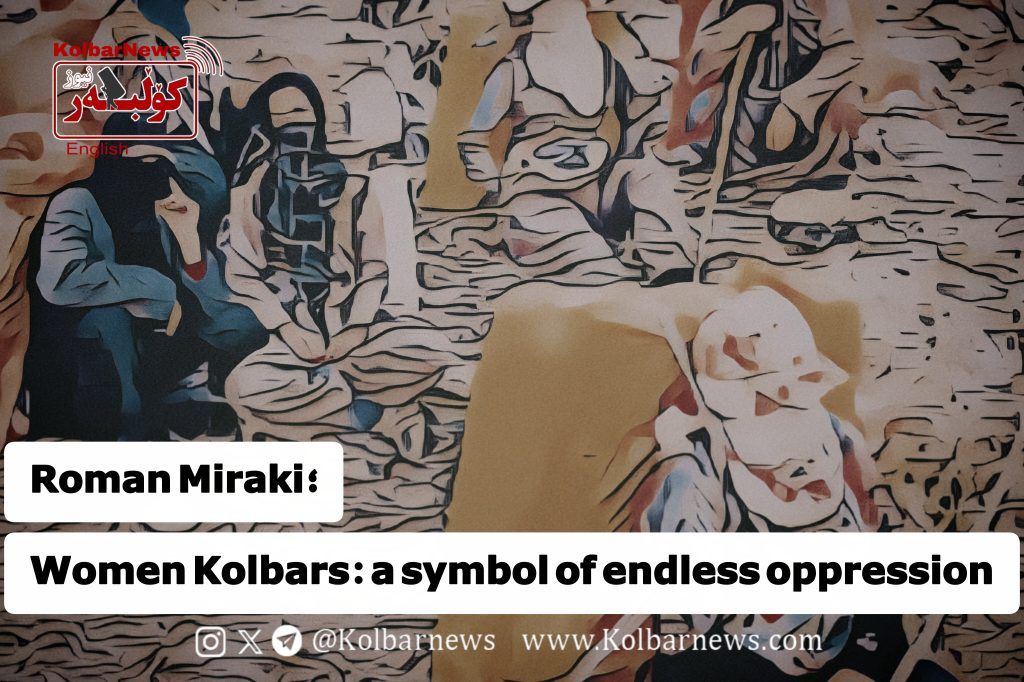Writer; Roman Miraki

The Iranian Kurdistan may be the only region where the term Kolbari is common. Although Kolbari is very dangerous and all Kolbars are expected to die, women also participate in Kolbari.
For ten years, the Iranian regime has imposed a series of policies on the people in order to subjugate their will and control them. These policies include creating high prices, poverty, and economic pressure on the people and are used as a tool to control society. This approach is especially evident in areas rich in natural resources and underground wealth. However, these wealth has been confiscated by the Iranian regime and the local people have been deprived of benefiting from it. For this reason, people are forced to turn to Kolbari to make a living.
Although Kolbari is known as an illegal and dangerous path, people have no choice but to turn to this risky phenomenon to earn a living for their families or to escape the problems of seasonal phenomenon in various cities in Iran.
The Iranian Kurdistan may be the only region where Kolbari is recognized as a phenomenon. Despite the fact that it is extremely dangerous and Kolbars are always waiting to die, many people, due to economic pressures and lack of access to other jobs, accept this precarious phenomenon.
Systematic discrimination by the Iranian regime and heavy economic pressures have now forced both men and women to become Kolbar. Kolbari women have been forced to choose this phenomenon in order to be able to live an independent life with their own abilities, not because of personal interest or passion. They do not even think about their health and well-being and continue to Kolbari in the cold and hot seasons. Kolbari women travel dangerous routes to escape from the dire living conditions.
Despite the hardships of the journey, women Kolbar are forced to wear men’s clothing to do their work. They also face other threats along the way, including shooting by Pasdaran forces, the lack of trust of bar owners in women, low wages, and the presence of landmines left over from the Iran-Iraq war, which have in some cases led to amputations.
In addition, women Kolbars face numerous cases of assault and harassment on these routes. In 2021 and 2022, about 60 to 70 women Kolbars were assaulted.
Although there are no precise statistics on the number of Kolbars available, some unofficial sources estimate that the number of Kolbars in various cities of Iranian Kurdistan, including Baneh, Marivan, Saqqez, Sanandaj, Sardasht, Kamiyaran, Oshnavieh, Nowsud, and Paveh, as well as in Kermanshah province and the Moukrian regions, is between 80,000 and 170,000 Kolbars.
According to unofficial statistics, in 2021, the number of women Kolbars in 7 villages affiliated with the provinces of Sanandaj and Kermanshah has reached 110 women Kolbars.
Also, according to Kolbarnews data, in the first six months of 2025, 30 Kolbars were killed or injured due to reasons such as direct fire from Iranian regime forces, extreme cold, mine explosions, falls from mountain heights, and other similar incidents. Of these, 2 were child Kolbars under the age of 18.
Due to the occupation of Kurdistan and the plundering of the region’s wealth and resources by regional governments, as well as the adverse political and economic conditions, Kurdish women have always been among the victims of this situation. Today, if we witness the presence of women on the Kolbari routes in Iranian Kurdistan, this phenomenon is not unprecedented. Earlier, before the fall of the Iraqi Baath regime in 2003, women in Iraqi Kurdistan were also forced to do Kolbari phenomenon due to economic pressures and livelihood difficulties. This shows how poverty and political-economic instability have driven Kurdish women to Kolbari in different regions.

